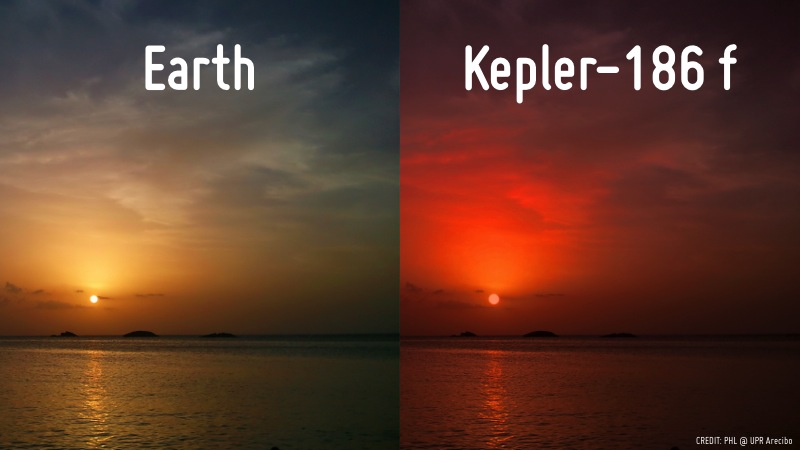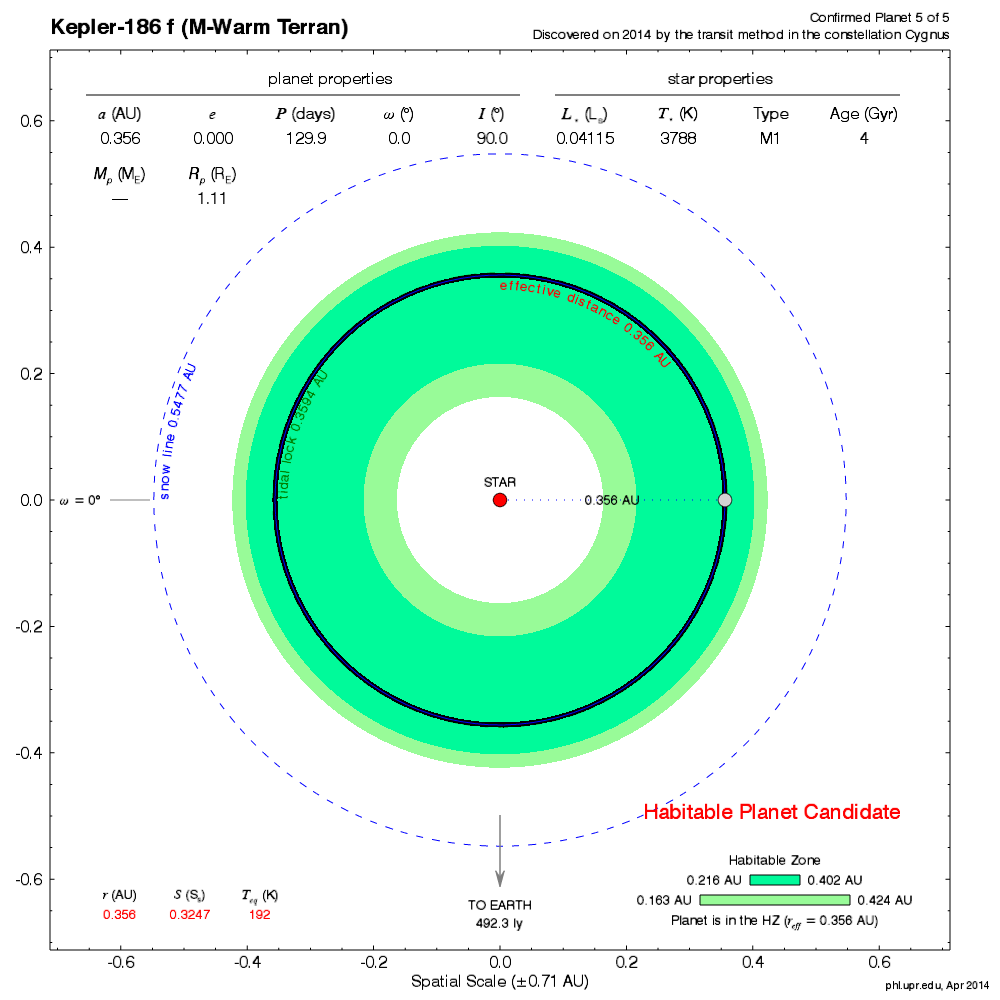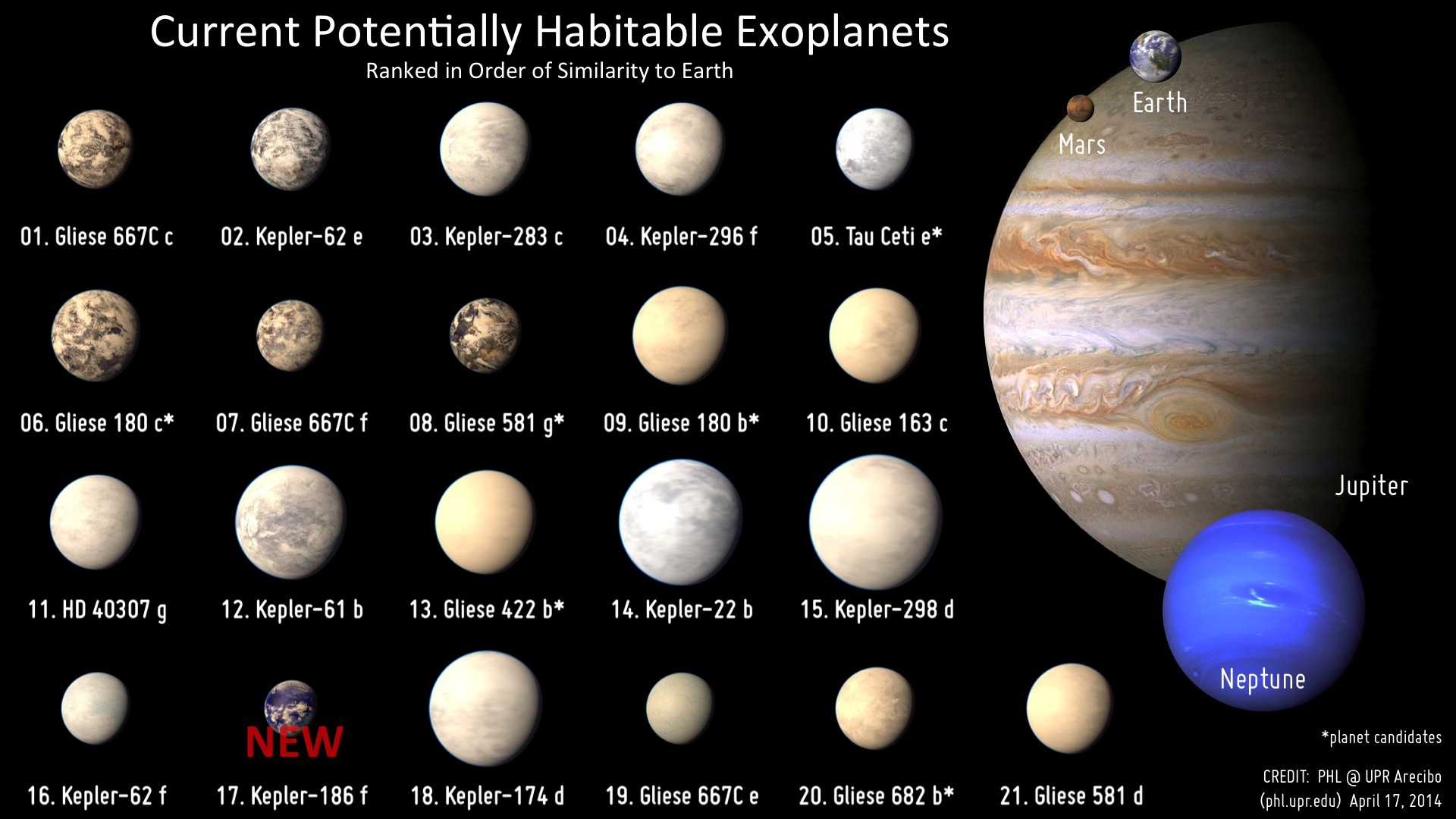First Potentially Habitable Terran World
Kepler-186 is a stellar system of five planets with an Earth-size world in the habitable zone.

Simulated comparison of a sunset on Kepler-186f and Earth. On Kepler-186f the star looks dimmer but slightly larger.
(PHL @ UPR Arecibo) – All the known potentially habitable exoplanets so far are superterran worlds (aka super-Earths) somewhat larger than Earth. The potential of life of these worlds is difficult to relate to Earth since there are no planets in the Solar System of comparable size and we know very little of them. Now a team of scientists led by Elisa V. Quintana from the SETI Institute and NASA Ames report the discovery of Kepler-186f, the first terran world (Earth-size) in the habitable zone of a star.
Kepler-186f has a similar size to Earth and it is most likely a rocky world. It orbits the M-dwarf star Kepler-186 along with four other inner planets, which are as old as the Solar System (>4 Gyr), in the constellation Cygnus 500 light years away. Kepler-186f receives less stellar flux (~32%) than presently does Mars (~43%). It could have a temperate climate if it has an atmosphere much denser than Earth. Even Earth probably experienced at least one episode of global glaciation with just a slightly lower stellar flux than today, 650 million years ago. However, early Mars had running surface liquid water with a similar stellar flux as Kepler-186f.
Kepler-186f was added to the Habitable Exoplanets Catalog with a low Earth Similarity Index (ESI) of 0.64 due to its potential colder climate. Still, it could be a more Earth-like world if it is experiencing a much higher greenhouse effect than Earth. Nevertheless, Kepler-186f is also the best candidate now of a rocky world in the habitable zone compared to the other known potentially habitable worlds.
Resources
- Original Press Release: NASA’s Kepler Discovers First Earth-Size Planet In The ‘Habitable Zone’ of Another Star
- Paper: An Earth-Sized Planet in the Habitable Zone of a Cool Star
- SETI Institute Hangout with Research Scientists [April 17, 2014 @ 6PM EDT]
- Habitable Exoplanets Catalog

Figure 1. Artistic representation of Kepler-186f as a cold world with shallow oceans as compared to Earth. Other possible interpretations of Kepler-186f are as a snowball frozen world (Hoth-like) or a dry cold world (Mars-like).


Figure 2. Orbital distribution of planets in the stellar system Kepler-186 (top) compared to Kepler-62 (bottom). Both planets ‘f’ of Kepler-186 and Kepler-62 receive about the same stellar flux.

Figure 3. Analysis of the orbit of Kepler-186f. Its equilibrium temperature is around 192 K for a similar terrestrial albedo. For comparison, Mars has an equilibrium temperature of 210 K. Kepler-186f also orbits just in the outer stellar zone for tidally locked-planets but its rotational state is uncertain. The diagram does not show the orbits of the other inner planets of Kepler-186. More details about this figure are available in the Exoplanet Orbital Catalog

Figure 4. The new lineup of up to 21 potentially habitable exoplanets according to the Habitable Exoplanets Catalog. Kepler-186f is the most Earth-size planet now but it also receives one third the energy from its star than Earth. This significantly lowers its observable similarities with Earth as compared with other planets in the catalog.











